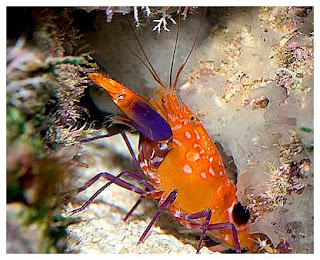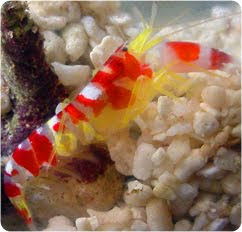blog (a blend of the term web log) is a type of website or part of a website. Blogs are usually maintained by an individual with regular entries of commentary, descriptions of events, or other material such as graphics or video. Entries are commonly displayed in reverse-chronological order. Blog can also be used as a verb, meaning to maintain or add content to a blog.
Most blogs are interactive, allowing visitors to leave comments and even message each other via widgets on the blogs and it is this interactivity that distinguishes them from other static websites.
Many blogs provide commentary or news on a particular subject; others function as more personal online diaries. A typical blog combines text, images, and links to other blogs, Web pages, and other media related to its topic. The ability of readers to leave comments in an interactive format is an important part of many blogs. Most blogs are primarily textual, although some focus on art (Art blog), photographs (photoblog), videos (video blogging), music (MP3 blog), and audio (podcasting). Microblogging is another type of blogging, featuring very short posts.
Kent
Saturday, November 6, 2010
ROBOT
DEFINITION OF ROBOT
The word robot can refer to both physical robots and virtual software agents, but the latter are usually referred to as bots. There is no consensus on which machines qualify as robots but there is general agreement among experts, and the public, that robots tend to do some or all of the following: move around, operate a mechanical limb, sense and manipulate their environment, and exhibit intelligent behavior — especially behavior which mimics humans or other animals.
There is no one definition of robot which satisfies everyone and many people have their own.For example Joseph Engelberger, a pioneer in industrial robotics, once remarked: "I can't define a robot, but I know one when I see one." According to the Encyclopaedia Britannica a robot is "any automatically operated machine that replaces human effort, though it may not resemble human beings in appearance or perform functions in a humanlike manner". Merriam-Webster describes a robot as a "machine that looks like a human being and performs various complex acts (as walking or talking) of a human being", or a "device that automatically performs complicated often repetitive tasks", or a "mechanism guided by automatic controls".
GENERAL-PURPOSE AUTONOMOUS ROBOTS
General-purpose autonomous robots are robots that can perform a variety of functions independently. General-purpose autonomous robots typically can navigate independently in known spaces, handle their own re-charging needs, interface with electronic doors and elevators and perform other basic tasks. Like computers, general-purpose robots can link with networks, software and accessories that increase their usefulness. They may recognize people or objects, talk, provide companionship, monitor environmental quality, respond to alarms, pick up supplies and perform other useful tasks. General-purpose robots may perform a variety of functions simultaneously or they may take on different roles at different times of day. Some such robots try to mimic human beings and may even resemble people in appearance; this type of robot is called a humanoid robot.
ULTRASOUND
Ultrasound is cyclic sound pressure with a frequency greater than the upper limit of human hearing. Although this limit varies from person to person, it is approximately 20 kilohertz (20,000 hertz) in healthy, young adults and thus, 20 kHz serves as a useful lower limit in describing ultrasound. The production of ultrasound is used in many different fields, typically to penetrate a medium and measure the reflection signature or supply focused energy. The reflection signature can reveal details about the inner structure of the medium, a property also used by animals such as bats for hunting. The most well known application of ultrasound is its use in sonography to produce pictures of fetuses in the human womb. There are a vast number of other applications as well.
The word robot can refer to both physical robots and virtual software agents, but the latter are usually referred to as bots. There is no consensus on which machines qualify as robots but there is general agreement among experts, and the public, that robots tend to do some or all of the following: move around, operate a mechanical limb, sense and manipulate their environment, and exhibit intelligent behavior — especially behavior which mimics humans or other animals.
There is no one definition of robot which satisfies everyone and many people have their own.For example Joseph Engelberger, a pioneer in industrial robotics, once remarked: "I can't define a robot, but I know one when I see one." According to the Encyclopaedia Britannica a robot is "any automatically operated machine that replaces human effort, though it may not resemble human beings in appearance or perform functions in a humanlike manner". Merriam-Webster describes a robot as a "machine that looks like a human being and performs various complex acts (as walking or talking) of a human being", or a "device that automatically performs complicated often repetitive tasks", or a "mechanism guided by automatic controls".
GENERAL-PURPOSE AUTONOMOUS ROBOTS
General-purpose autonomous robots are robots that can perform a variety of functions independently. General-purpose autonomous robots typically can navigate independently in known spaces, handle their own re-charging needs, interface with electronic doors and elevators and perform other basic tasks. Like computers, general-purpose robots can link with networks, software and accessories that increase their usefulness. They may recognize people or objects, talk, provide companionship, monitor environmental quality, respond to alarms, pick up supplies and perform other useful tasks. General-purpose robots may perform a variety of functions simultaneously or they may take on different roles at different times of day. Some such robots try to mimic human beings and may even resemble people in appearance; this type of robot is called a humanoid robot.
ULTRASOUND
Ultrasound is cyclic sound pressure with a frequency greater than the upper limit of human hearing. Although this limit varies from person to person, it is approximately 20 kilohertz (20,000 hertz) in healthy, young adults and thus, 20 kHz serves as a useful lower limit in describing ultrasound. The production of ultrasound is used in many different fields, typically to penetrate a medium and measure the reflection signature or supply focused energy. The reflection signature can reveal details about the inner structure of the medium, a property also used by animals such as bats for hunting. The most well known application of ultrasound is its use in sonography to produce pictures of fetuses in the human womb. There are a vast number of other applications as well.
Friday, October 1, 2010
Pistol/Snapping Shrimp
The snapping shrimp grows to only 1–2 inches (3–5 cm) long. It is distinctive for its remarkably disproportionate large claw, larger by half than the entire body. The claw can be on either arm of the body, and unlike most shrimp claws does not have pincers at the end. Rather, it has a pistol-like feature made of two parts. A joint allows the "hammer" part to move backward into a right-angled position. When released, it snaps into the other part of the claw, emitting an enormously powerful wave of bubbles capable of stunning larger fish and breaking small glass jars.




Thursday, July 29, 2010
Peregrine Falcon the fastest bird~



The Peregrine Falcon (Falco peregrinus), also known as the Peregrine,and historically as the "Duck Hawk" in North America, is a cosmopolitan bird of prey in the family Falconidae. It is a large, crow-sized falcon, with a blue-gray back, barred white underparts, and a black head and "moustache". It can reach speeds over 320 km/h (200 mph) in a stoop,making it one of the fastest creatures on the planet.As is common with bird-eating raptors, the female is much bigger than the male.Experts recognize 17 to 19 subspecies which vary in appearance and range; there is disagreement over whether the distinctive Barbary Falcon is a subspecies or a distinct species.
Bermuda Sea Creature~
Those tiny particles in their cell which light them up like a LED is very wonderful~ ^^
Wednesday, July 28, 2010
Amazon Rainforest
Subscribe to:
Posts (Atom)




